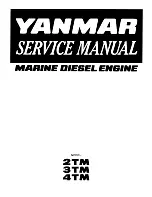
The Modbus RTU protocol establishes the format for the
master’s query by providing the following information:
•
The device (or broadcast) address.
•
A function code defining the requested action.
•
Any data to be sent.
•
An error-checking field.
The slave’s response message is also constructed using
Modbus protocol. It contains fields confirming the action
taken, any data to be returned, and an error-checking field.
If an error occurs in receipt of the message, or if the slave
is unable to perform the requested action, the slave
constructs and sends an error message. Alternatively, a
timeout occurs.
3.6.4 Frequency Converter with Modbus
RTU
The frequency converter communicates in Modbus RTU
format over the built-in RS485 interface. Modbus RTU
provides access to the control word and bus reference of
the frequency converter.
The control word allows the Modbus master to control
several important functions of the frequency converter:
•
Start.
•
Various stops:
-
Coast stop.
-
Quick stop.
-
DC-brake stop.
-
Normal (ramp) stop.
•
Reset after a fault trip.
•
Run at various preset speeds.
•
Run in reverse.
•
Change the active set-up.
•
Control the frequency converter’s built-in relay.
The bus reference is commonly used for speed control. It is
also possible to access the parameters, read their values,
and, where possible, write values to them. Accessing the
parameters offers a range of control options, including
controlling the setpoint of the frequency converter when
its internal PI controller is used.
3.7 Network Configuration
To enable Modbus RTU on the frequency converter, set the
following parameters:
Parameter
Setting
Parameter 8-30 Protocol
Modbus RTU
Parameter 8-31 Address
1–247
Parameter 8-32 Baud Rate
2400–115200
Parameter 8-33 Parity / Stop
Bits
Even parity, 1 stop bit (default)
Table 3.11 Network Configuration
3.8 Modbus RTU Message Framing
Structure
3.8.1 Introduction
The controllers are set up to communicate on the Modbus
network using RTU (remote terminal unit) mode, with each
byte in a message containing 2 4-bit hexadecimal
characters. The format for each byte is shown in
Start
bit
Data byte
Stop/
parity
Stop
Table 3.12 Format for Each Byte
Coding system
8-bit binary, hexadecimal 0–9, A–F. 2
hexadecimal characters contained in each 8-
bit field of the message.
Bits per byte
•
1 start bit.
•
8 data bits, least significant bit sent first.
•
1 bit for even/odd parity; no bit for no
parity.
•
1 stop bit if parity is used; 2 bits if no
parity.
Error check field
Cyclic redundancy check (CRC).
Table 3.13 Byte Details
3.8.2 Modbus RTU Message Structure
The transmitting device places a Modbus RTU message
into a frame with a known beginning and ending point.
This allows receiving devices to begin at the start of the
message, read the address portion, determine which
device is addressed (or all devices, if the message is
broadcast), and to recognize when the message is
completed. Partial messages are detected and errors set as
a result. Characters for transmission must be in
hexadecimal 00 to FF format in each field. The frequency
converter continuously monitors the network bus, also
RS485 Installation and Set-...
VLT
®
DriveMotor FCP 106/FCM 106
24
Danfoss A/S © 11/2015 All rights reserved.
MG03N202
3
3
















































